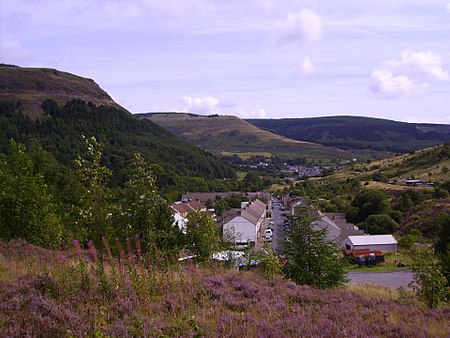Blaencwm
AC with 0 elementsRhondda ValleyVillages in Rhondda Cynon Taf

Blaencwm (Welsh: Blaen-y-Cwm) is a village in the county borough of Rhondda Cynon Taf, Wales, lying at the head the Rhondda Fawr valley. Two collieries were opened here during the Industrial Revolution, the Dunraven Colliery in 1865 and the Glenrhondda Colliery in 1911. Both had closed by 1966 and the sites have since been landscaped, leaving little trace of their industrial past. It is in the historic county of Glamorgan.
Excerpt from the Wikipedia article Blaencwm (License: CC BY-SA 3.0, Authors, Images).Blaencwm
Hendrewen Road,
Geographical coordinates (GPS) Address Nearby Places Show on map
Geographical coordinates (GPS)
| Latitude | Longitude |
|---|---|
| N 51.677 ° | E -3.564 ° |
Address
Hendrewen Road
Hendrewen Road
CF42 5DR , Treherbert
Wales, United Kingdom
Open on Google Maps




